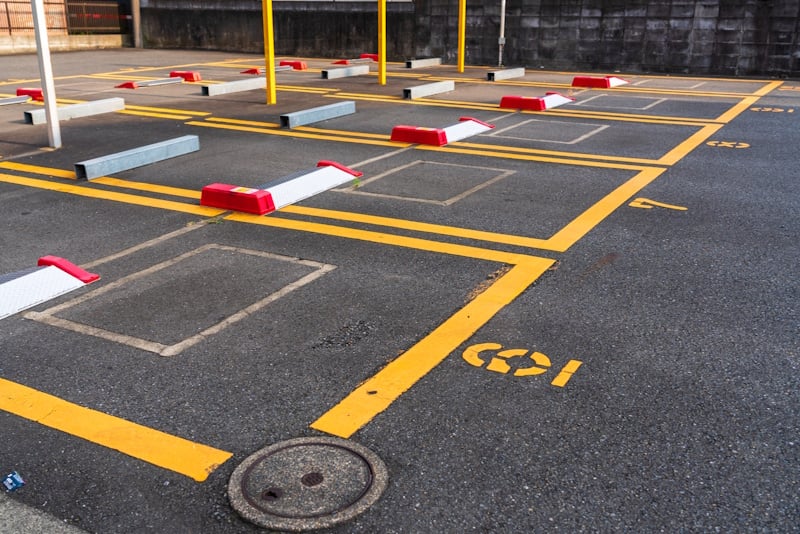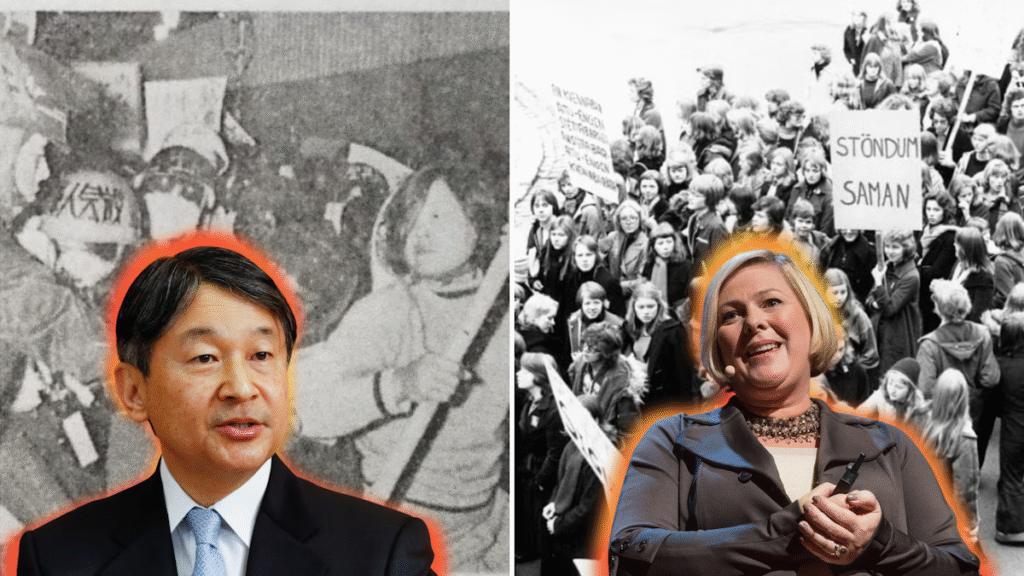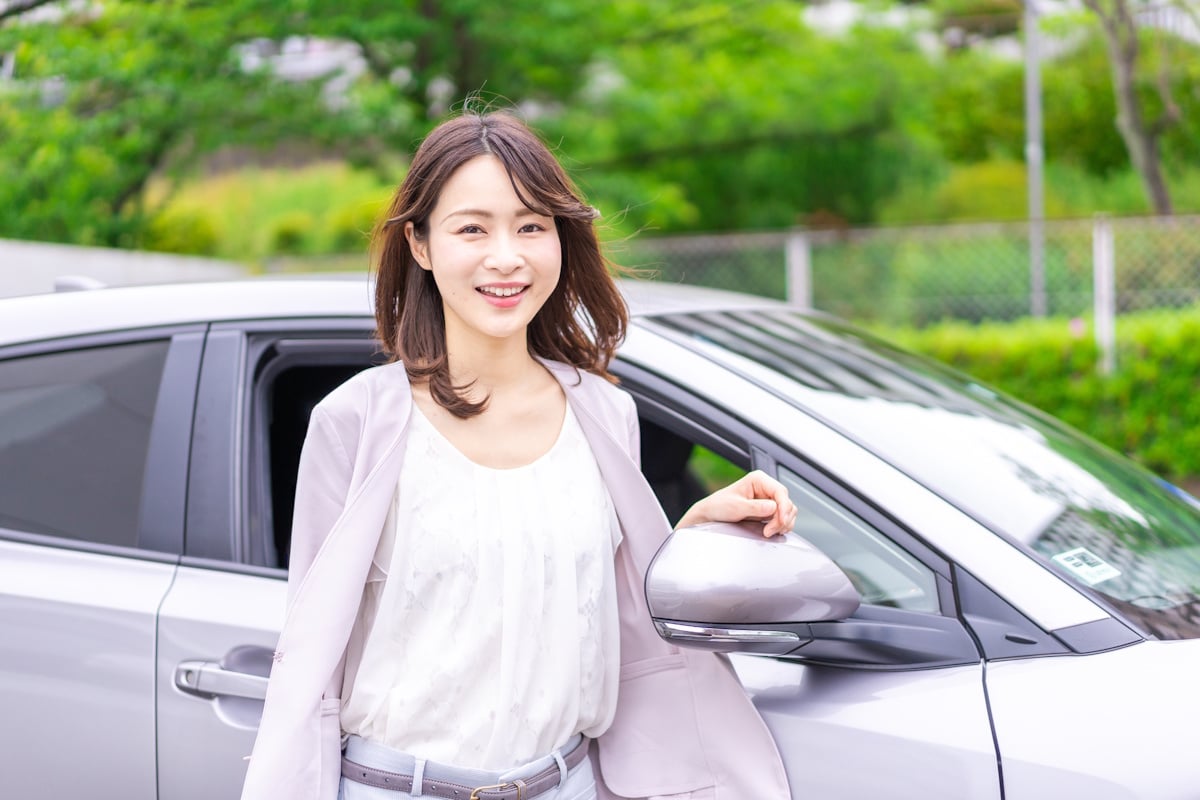Women-only parking spaces first appeared in Japan in the 1980s. They were introduced to improve safety and convenience, but they also spark debate. Supporters see them as practical and secure – but some men claim they amount to gender discrimination.
Table of Contents
ToggleFrom the 1980s to today: The role of women-only parking spaces in Japan

Women-only parking spaces in Japan first appeared in the 1980s, mainly in department store parking facilities. According to the parking information site iPosNet, they remain common today in areas such as Tokyo, Aichi, and Nagano.
In urban centers and large shopping complexes, the spaces are often outlined in pink and located in bright, high-traffic areas at night to improve security. The goal is to give women a stronger sense of safety when using parking facilities.
A representative of a parking facility in the Tokyo metropolitan area said it created the spaces “to make parking easier for women who are not used to driving.” Built in the 1980s, the multi-story structure set aside 35 wider spaces for women, larger than the standard spots.
Another company representative in western Japan explained that they introduced women-only parking “as a consideration for women who are not confident in driving.” Their five-story parking facility reserves 15 such spaces on the second floor, painted pink and clearly marked as women-only. Users have said the feature helps them feel safer when parking.
These spaces aim to improve convenience for a wide range of users. Wider than standard spots, they have become established as a customer service that combines safety with ease of use.
Women’s needs and the creation of women-only parking spaces
In recent years, differences in parking behavior between men and women have drawn attention in Japan’s cities. A February 2023 survey by Agoora, a company based in Tokyo’s Suginami Ward, found that 76.2% of women said they struggle with parking, compared with 55.6% of men.
The survey covered 1,000 men and women nationwide who admitted they are not confident drivers. The results highlight a clear gender gap in attitudes toward parking. The study also showed that women place greater importance not only on convenience but also on security and ease of use when selecting a parking facility.
Planning a trip to Japan? Get an authentic, interpreted experience from Unseen Japan Tours and see a side of the country others miss!

"Noah [at Unseen Japan] put together an itinerary that didn’t lock us in and we could travel at our own pace. In Tokyo, he guided us personally on a walking tour. Overall, he made our Japan trip an experience not to forget." - Kate and Simon S., Australia

See a side of Tokyo that other tourists can't. Book a tour with Unseen Japan Tours - we'll tailor your trip to your interests and guide you through experiences usually closed off to non-Japanese speakers.


Want more news and views from Japan? Donate $5/month ($60 one-time donation) to the Unseen Japan Journalism Fund to join Unseen Japan Insider. You'll get our Insider newsletter with more news and deep dives, a chance to get your burning Japan questions answered, and a voice in our future editorial direction.
Standard parking spaces in Japan are about 2.5 meters wide. By contrast, some women-only facilities secure at least 2.7 meters—an 8% increase. The extra space allows drivers to open and close car doors safely and makes getting in and out more convenient. This design especially benefits pregnant women and those carrying children.
Placement is another key factor. Many facilities set up women-only spaces near entrances and in well-lit areas, reducing the burden of carrying heavy items while also strengthening security.
Why some get riled over women-only parking spaces

Women-only parking spaces aim to improve safety and convenience, but some critics call them gender discrimination. Others argue that the spaces reinforce the stereotype that women are poor drivers.
Critics also warn that these facilities may unintentionally fuel bias against women’s driving ability and create a sense of unfairness between men and women. Another perspective holds that driving skills and safety awareness depend on the individual, not gender, making division by gender inappropriate.
Many female users, however, praise the spaces for the security and convenience they provide. Supporters highlight the focus on women’s safety, especially the crime-prevention effect at night and locations near building entrances.
Still, the challenge remains how to balance safety with fairness. Some men criticize women-only parking as discriminatory and question the legal validity of introducing it in public facilities and commercial complexes. The debate links to broader discussions about gender-based services in Japan, including women-only train cars and “ladies’ day” discounts.
Opponents argue that instead of labeling spaces by gender, operators should address individual needs and driving skills. They propose gender-neutral categories such as “for beginner drivers” or “for those needing extra safety considerations.”
A gender studies scholar weighs in
Sechiyama Kaku, professor of gender studies at the University of Tokyo’s Graduate School of Arts and Sciences, shared his perspective on women-only parking spaces installed by private companies.
Planning a trip to Japan? Get an authentic, interpreted experience from Unseen Japan Tours and see a side of the country others miss!

"Noah [at Unseen Japan] put together an itinerary that didn’t lock us in and we could travel at our own pace. In Tokyo, he guided us personally on a walking tour. Overall, he made our Japan trip an experience not to forget." - Kate and Simon S., Australia

See a side of Tokyo that other tourists can't. Book a tour with Unseen Japan Tours - we'll tailor your trip to your interests and guide you through experiences usually closed off to non-Japanese speakers.


Want more news and views from Japan? Donate $5/month ($60 one-time donation) to the Unseen Japan Journalism Fund to join Unseen Japan Insider. You'll get our Insider newsletter with more news and deep dives, a chance to get your burning Japan questions answered, and a voice in our future editorial direction.
“As part of customer service, I don’t see a problem with creating spaces to accommodate women who are not confident in driving. The disadvantage for those who can’t use these spaces isn’t very large. However, if a local government were to do the same in a parking facility it operates, the issue could raise concerns under Article 14 of Japan’s Constitution, which guarantees equality under the law.”
Why this page doesn't look like crap
You may notice a few things about this page. First, it’s mostly content – not ads. Second, this article was written by a human, not a plagiaristic Turing machine.
Unseen Japan is a collective of independent authors. We work hard to keep our content free of intrusive ads and AI slop.
Help us keep it that way. Donate to the Unseen Japan Journalism Fund to support our work. Regular donors will receive Insider, our paid newsletter with weekly bonus content about Japan. Plus, your contribution will help us produce more content like this.
What to read next

1st vs. 118th: On Gender Equality, Japan and Iceland Took Different Roads
The Emperor of Japan asked Iceland’s president a very good question recently: Why is your gender gap so much smaller than ours?

Japanese Police Consider Changing Anti-Stalking Law After Murder
Japan’s National Police Agency (NPA) is considering the change after police in Kawasaki failed to protect a stalking victim.

Japanese Women’s University Says It’ll Admit Men, Draws Mixed Reactions
The shift reflects the change in women’s education over the past century as well as the impact of population decline on enrollment.
Sources
男性差別?それとも配慮?「女性専用駐車場」が世界で増える根本理由――8割が駐車苦手の現実 Merkmal
女性専用駐車スペースは「性差別」? 「運転苦手な女性に配慮」ネットで論争…専門家に見解を聞く JCAST ニュース


